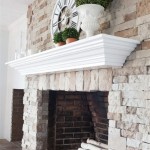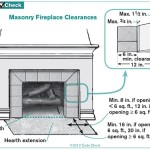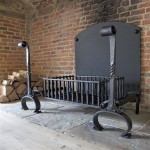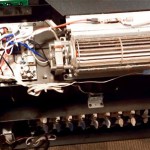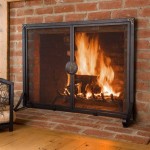Pleasant Hearth Gothic Fireplace Screening Room Design and the Importance of DWG Files
The integration of a fireplace into a home theater, often termed a screening room, presents a unique design challenge. Bringing together the ambiance and warmth of a fireplace, specifically one with a Gothic aesthetic like those offered by Pleasant Hearth, with the technical requirements of a high-quality home theater necessitates careful planning and execution. A crucial tool in this process is the use of DWG (Drawing) files, which provide detailed architectural blueprints that facilitate accurate and efficient design implementation.
A Pleasant Hearth Gothic fireplace, characterized by its ornate details, arched designs, and often dark metal finishes, evokes a sense of historical grandeur and adds a distinct character to a space. However, its incorporation into a screening room requires consideration of factors like heat management, acoustics, and visual harmony. The proper use of DWG files becomes essential to address these challenges effectively, ensuring a functional and aesthetically pleasing outcome.
Understanding the Role of DWG Files in Fireplace Design
DWG files are the native file format for AutoCAD, a widely used computer-aided design (CAD) software. These files contain precise 2D or 3D representations of architectural elements, including fireplaces. They provide a wealth of information, such as dimensions, materials, and structural details, which are critical for accurate installation and integration within a larger design. For a Pleasant Hearth Gothic fireplace, a DWG file can outline the exact dimensions of the fireplace unit, the required clearances for safety, and any specific installation instructions. This information helps architects, designers, and contractors ensure that the fireplace is installed correctly and safely, complying with building codes and manufacturer specifications.
The use of DWG files goes beyond simple installation. They also allow for detailed modeling and simulation of the fireplace within the screening room environment. Designers can use CAD software to visualize how the fireplace will look within the space, taking into account factors like viewing angles, screen placement, and furniture layout. This allows for informed decision-making and helps prevent costly mistakes during the construction phase. For example, accurately placing the fireplace based on the DWG data can ensure that the heat output does not negatively impact sensitive electronic equipment within the screening room, or obstruct the optimal viewing angle of the screen.
Furthermore, DWG files facilitate collaboration between different professionals involved in the project. Architects, interior designers, HVAC engineers, and contractors can all access and share the same DWG file, ensuring that everyone is working from the same set of accurate information. This reduces the risk of miscommunication and errors, streamlining the design and construction process. For instance, the HVAC engineer can use the DWG file to determine the appropriate ventilation requirements for the fireplace, while the interior designer can use it to select complementary materials and finishes that enhance the Gothic aesthetic.
Key Considerations for Integrating a Gothic Fireplace into a Screening Room
Integrating a Pleasant Hearth Gothic fireplace into a screening room requires careful consideration of various technical and aesthetic factors. The goal is to create a space that is both visually stunning and functionally sound as a home theater. The DWG file plays a critical role in addressing these considerations.
One of the most important factors is heat management. Fireplaces produce a significant amount of heat, which can damage sensitive electronic equipment, such as projectors, speakers, and media servers. The DWG file can be used to model the heat output of the fireplace and determine the optimal placement of electronic components to avoid overheating. Furthermore, the DWG file can be used to design appropriate ventilation systems to dissipate heat and maintain a comfortable temperature within the screening room. This may involve incorporating heat shields, fans, or specialized ventilation ducts to ensure that the electronics are protected from the potentially damaging effects of the fireplace’s heat.
Acoustics are another critical consideration in a screening room. The fireplace can impact the sound quality of the room, both positively and negatively. The hard surfaces of the fireplace unit can reflect sound, creating unwanted echoes and reverberations. However, the fireplace can also act as a sound diffuser, breaking up standing waves and improving the overall acoustics of the room. The DWG file can be used to model the acoustic properties of the fireplace and optimize its placement to achieve the desired sound quality. This may involve incorporating sound-absorbing materials around the fireplace, such as acoustic panels or fabric-covered walls, to minimize reflections and improve sound clarity. The shape and texture of the Gothic detailing on the fireplace itself can also be considered in the acoustic design, as these elements can contribute to sound diffusion.
The visual impact of the fireplace on the screen is also a key consideration. The bright light from the fire can be distracting and reduce the contrast ratio of the screen. The DWG file can be used to simulate the light output of the fireplace and determine the optimal screen placement to minimize glare and reflections. This may involve positioning the fireplace off to the side of the screen, or incorporating light-blocking curtains or blinds to reduce ambient light. Furthermore, the design of the fireplace itself can be modified to minimize light spillage. This may involve using a glass screen to contain the flames or incorporating a hood to direct the light upwards and away from the screen.
Leveraging DWG Files for Efficient Construction and Modification
Once the design is finalized, the DWG file becomes an invaluable tool during the construction and installation phase. The file provides contractors with precise instructions for installing the fireplace, including the required clearances, structural supports, and ventilation connections. This helps ensure that the fireplace is installed correctly and safely, minimizing the risk of errors and delays.
The DWG file also facilitates modifications to the design. If unexpected challenges arise during construction, the DWG file can be easily modified to accommodate the changes. For example, if the existing chimney is not compatible with the fireplace flue, the DWG file can be used to design a new connection or modify the existing one. This flexibility allows for quick and efficient problem-solving, minimizing disruptions to the construction schedule. It ensures that design changes are accurately documented and implemented, preventing errors and ensuring that the final result is consistent with the original design intent.
Furthermore, the DWG file serves as a valuable record of the project for future maintenance and repairs. The file contains detailed information about the fireplace unit, including the manufacturer's specifications, installation instructions, and warranty information. This information can be used to diagnose problems, order replacement parts, and perform routine maintenance. The DWG file can also be used to plan future renovations or modifications to the screening room. The file provides a comprehensive overview of the existing structure, making it easier to design and implement changes without compromising the integrity of the fireplace or the overall design of the room.
In conclusion, the integration of a Pleasant Hearth Gothic fireplace into a screening room is a complex undertaking that requires careful planning and execution. DWG files are essential tools in this process, providing detailed architectural blueprints that facilitate accurate design implementation, efficient construction, and effective problem-solving. By leveraging the power of DWG files, architects, designers, and contractors can create screening rooms that are both visually stunning and functionally sound, combining the ambiance of a fireplace with the technical requirements of a high-quality home theater. The accuracy and detail provided by these files ensure that the Gothic fireplace integrates seamlessly into the sophisticated environment of a modern screening room, providing both warmth and aesthetic appeal.

Pleasant Hearth Gothic Fireplace Screen Black

Pleasant Hearth 633 Gothic Steel Fireplace Screen Black

Pleasant Hearth 54 In Espresso Steel 3 Panel Arched Fireplace Screen

Pleasant Hearth 48 In Colonial Brown Steel 3 Panel Arched Fireplace Screen Fa092sa At Com

Pleasant Hearth Fenwick Medium Glass Fireplace Doors Fn 5701 The Home Depot

Pleasant Hearth Gavin Large Black Glass Fireplace Doors Gv 7002bl The Home Depot

15 Best Fireplace Screens For Winter 2024 Decorative

Pleasant Hearth Arched 3 Panel Fireplace Screen 959 The Home Depot

Pleasant Hearth Collin Medium Black Glass Fireplace Doors Ci 3501bl The Home Depot

56 Fireplace Decor Ideas For Warmth And Style Year Round

